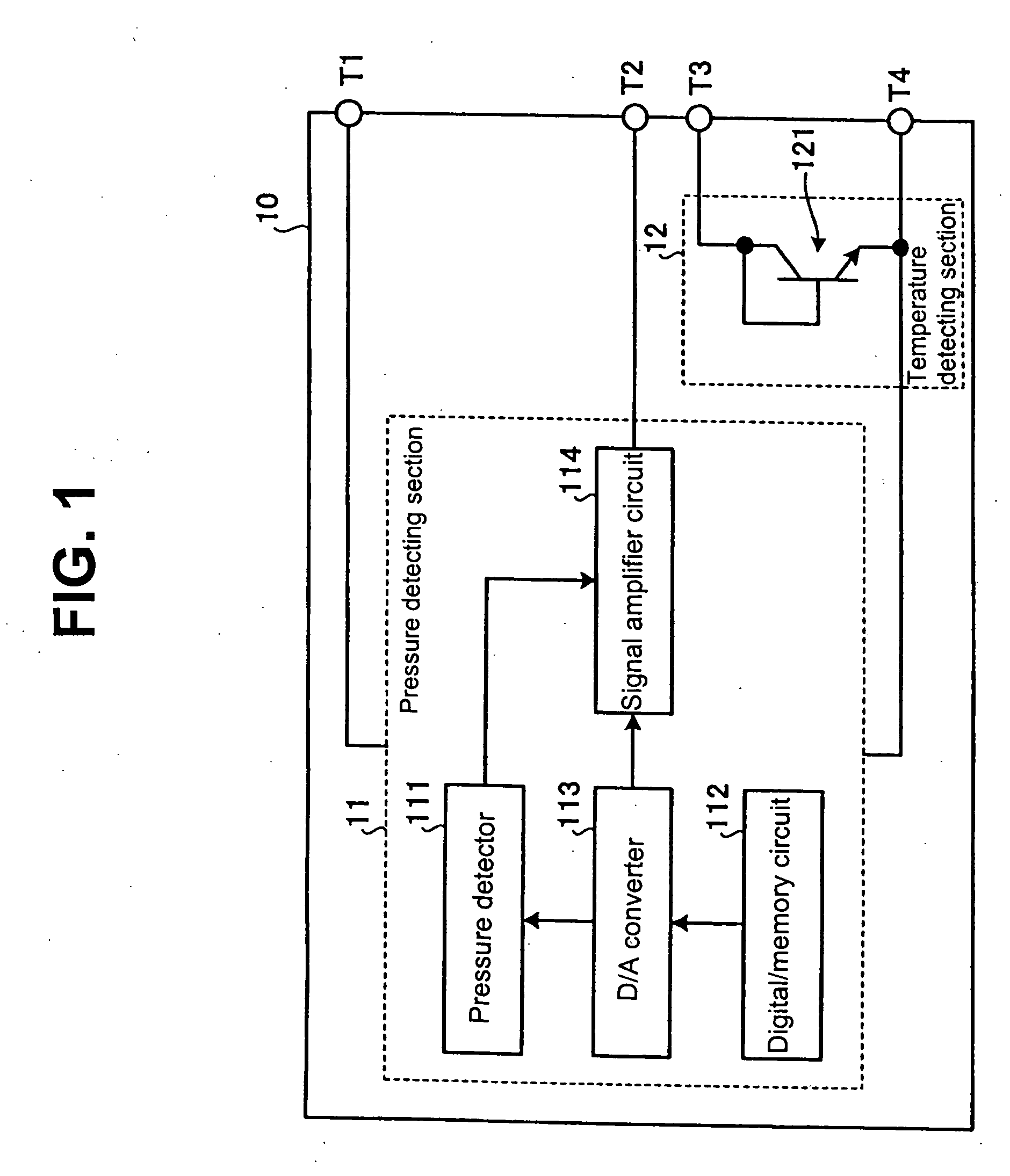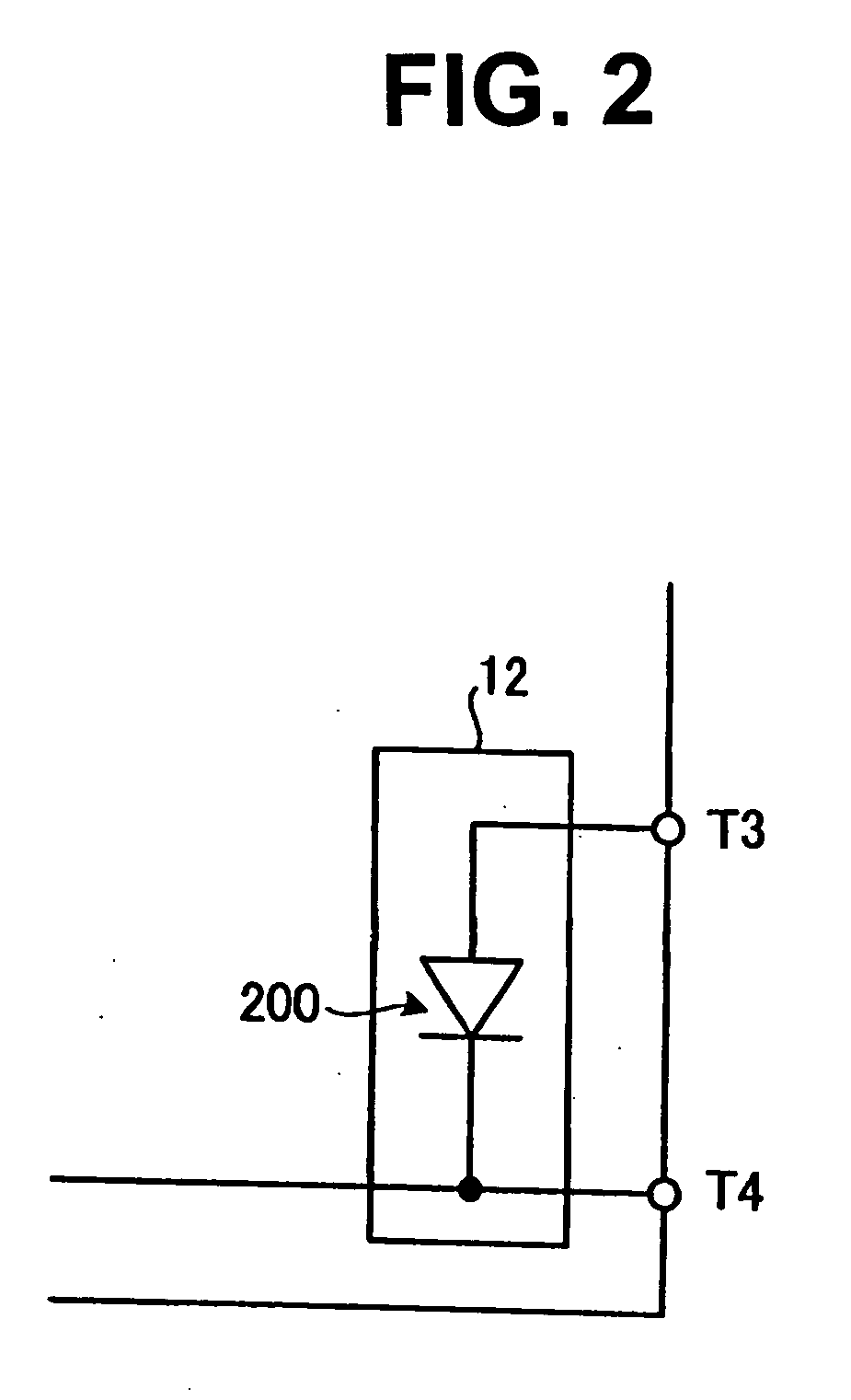Semiconductor device and temperature detection method using the same
a technology of semiconductor devices and temperature sensors, applied in the field of semiconductor devices, can solve the problems of increasing assembly costs, difficult to integrate pressure sensors and temperature sensors while reducing sizes, and increasing carbon dioxide emission amount, so as to facilitate the reduction of size, reduce manufacturing costs, and improve the effect of mass-productivity
- Summary
- Abstract
- Description
- Claims
- Application Information
AI Technical Summary
Benefits of technology
Problems solved by technology
Method used
Image
Examples
first embodiment
[0048] a p-type semiconductor is used for a substrate. Hereinafter, the substrate made of the p-type semiconductor will be referred to as the “p-type substrate 31.” An n-type well 32, which will work for a collector layer, is formed in p-type substrate 31. A p−-type base layer 331, which will work for a base layer, is formed in the surface portion of n-type well 32. An n+-type emitter layer 362, which will work for an emitter layer, is formed in the surface portion of p−-type base layer 331. A collector is formed of n-type well 32, a base is formed of p−-type base layer 331, and an emitter is formed of n+-type emitter layer 362 such that an npn-transistor (npn-transistor 121) of the so-called lateral-type is formed.
[0049] The term “p+-type” indicates that the impurity concentration for providing a p-type semiconductor with holes is high. The term “p−-type” indicates that the impurity concentration for providing a p-type semiconductor with holes is low. The term “n+-type” indicates ...
second embodiment
[0088] Since the forward voltages Vf's of the diodes are added by connecting, in series, npn-transistors 121 through 125, the respective bases and the respective collectors thereof are short-circuited with each other, it is possible to set the change of the diode forward voltages Vf's caused by a temperature change (the temperature coefficient) to be five times as high as the temperature coefficient for one npn-transistor. In other words, semiconductor apparatus 20 facilitates improving the sensitivity of the temperature sensor. Zener diode 13, which conducts a Zener operation when surges are inputted from the outside, facilitates protecting temperature detecting section 12 against the surges.
[0089] As described above, semiconductor apparatus 20 according to the second embodiment may be used for a composite sensor that exhibits an excellent surge withstanding capability, includes a temperature sensor, the output sensitivity thereof is very high, and facilitates detecting temperatur...
PUM
| Property | Measurement | Unit |
|---|---|---|
| driving current | aaaaa | aaaaa |
| temperature coefficient | aaaaa | aaaaa |
| absolute temperature coefficient | aaaaa | aaaaa |
Abstract
Description
Claims
Application Information
 Login to View More
Login to View More - R&D
- Intellectual Property
- Life Sciences
- Materials
- Tech Scout
- Unparalleled Data Quality
- Higher Quality Content
- 60% Fewer Hallucinations
Browse by: Latest US Patents, China's latest patents, Technical Efficacy Thesaurus, Application Domain, Technology Topic, Popular Technical Reports.
© 2025 PatSnap. All rights reserved.Legal|Privacy policy|Modern Slavery Act Transparency Statement|Sitemap|About US| Contact US: help@patsnap.com



